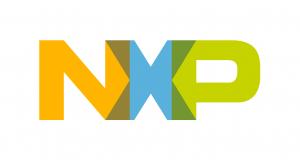NXP Semiconductors
We’re Updating Our Profiles Section
Stay tuned for all new and updated exclusive profiles on companies and organizations involved in the ecosystem.

Co-creator of NFC with Sony, NXP's partnership with Google announced in late 2010 has given it a dominant position in shipments for NFC chips for Android phones. It also has shipped NFC chips for all of Nokia's Symbian phones.
As of the end of 2011, NXP said it had design wins for more than 130 NFC handsets and tablets. Its only competitor during the year was Inside Secure, which sold the NFC chips to Research In Motion for about seven BlackBerry models released in 2011. NXP was believed to have edged out Inside in total NFC chip shipments in 2011, with more than 20 million unit shipments for NXP. All told, there were about 40 million NFC phones shipped by handset makers in 2011 using chips from NXP and Inside. That is lower than NXP had originally projected.
Back in 2008 and 2009, the economic downturn soured revenue, especially for NXP’s consumer electronics and automobiles. And its aging Mifare Classic technology used in hundreds of millions of cheap and plentiful contactless transport cards worldwide suffered well-publicized but inevitable hacks in 2008. Delays in NFC rollouts upended NXP’s rosy sales projections for the technology in 2008 and 2009 in NXP’s identification division. And in January 2010, rivals Infineon Technologies and Inside Contactless announced with the Nos. 2 and 3 card vendors a plan to offer "open-standard" chips for transit cards using an Infineon-developed authentication scheme that would directly compete with Mifare.
But as 2010 closed out, NXP appeared to be in the driver's seat in the NFC market, with the announced coup that Google would be using its NFC chips and NFC protocol software stack in its new Nexus S and latest Android operating system for smartphones. Samsung Electronics, maker of the Nexus S, later announced it would incorporate NFC (using chips from NXP) in its Galaxy S II smartphone. And NXP's chips are used in such other Android phones as the Galaxy Nexus and Galaxy Note.
As for Mifare, key customer Transport for London was sticking with NXP by upgrading to the chip supplier's top-of-the line DESFire technology for its huge transit-ticketing scheme, Oyster. Competitors are seeking to establish a new transit card technology, Cipurse, but as of late 2011, were still gearing up.
NXP abandoned the idea of selling NFC services and transferred its Mifare4Mobile application management unit to card vendor Gemalto in 2009, but held the rights to the intellectual property.
In banking cards, NXP’s SmartMX is used for dual-interface chips used on EMV contactless cards in Europe and beyond. The vendor finally introduced a contactless chip for the U.S contactless bank-card market in mid-2009.
| Financial Results |
2011 | 2010 | Change |
| Revenue | 698 | 589 | 18.5% |
| In millions of US$ for Identification division | |||
Employees
Identification unit: 500 (As of May 2009)
NXP Discloses Design Wins for More than 130 NFC Handsets and Tablets
NXP CEO: Google Has High Hopes for Android NFC Shipments
Report: NXP Not in Talks for Sale, Says CEO
NXP’s Gingerbread Coup Leaves Rivals With a Bitter Taste
Google Announces Nexus S Smartphone Packing NFC












